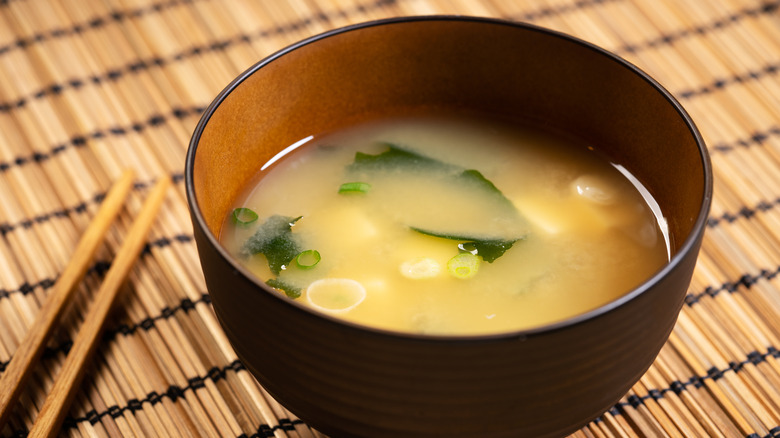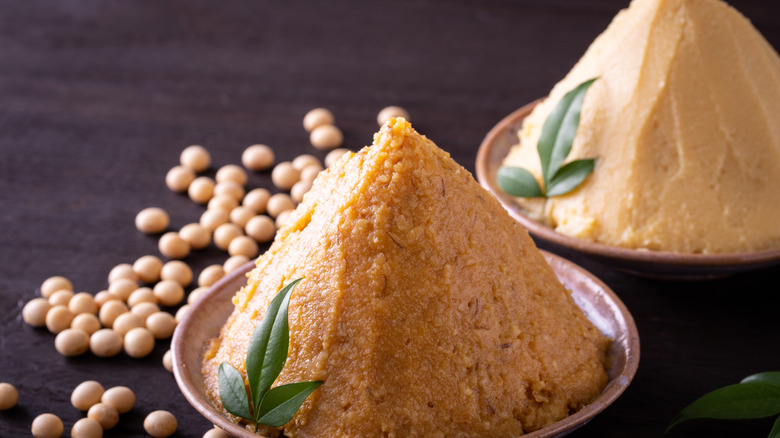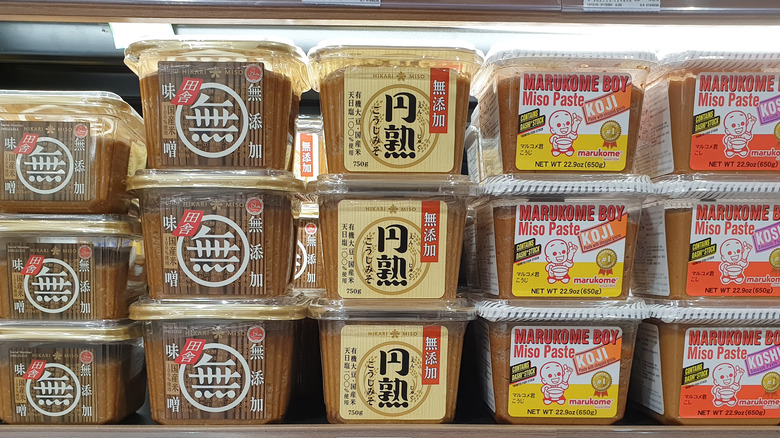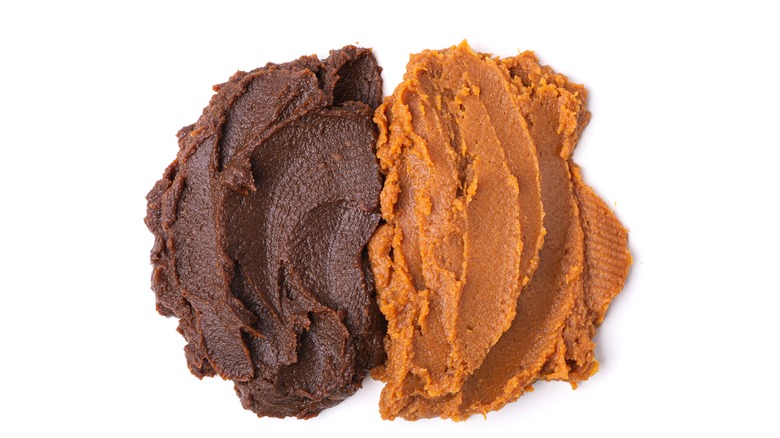3 Types Of Miso And How To Use Them
You may not realize it, but miso could be the most versatile ingredient in your pantry. Maybe you cook with miso regularly, but only use one type? Or you've had a tub in your refrigerator for a year, but haven't opened it yet (good news, it probably hasn't gone bad). Perhaps your only experience with miso is the little bowl of miso soup presented at the beginning of your meal at the Japanese spot down the street. If miso isn't one of your staples, we hope to inspire you to try it. Miso is a paste of fermented soybeans, or koji, salt, and water (per MasterClass).
The process is straightforward. Cooked soybeans are mixed with salt and koji, propagated on rice, barley, or soybeans. Then it's fermented. According to Marukume, the process is thought to have begun in China. However, miso is often thought of as Japanese because of its integral role in Japan's cuisine (via Gurunavi).
Miso is an umami-rich product because of its high glutamate and amino acid levels, per The Umami Information Center. It contains all the gut health benefits of fermented food. Nutritious, tasty, versatile, and less difficult to understand than you might think, Food52 explains the ingredient in this way: "Think of miso as similar to beer." There are white, yellow, and red misos — which are akin to lager, ale, and stout beers.
White miso
White miso is generally considered the most popular. It is also called shiro (via MasterClass). If a store carries only one style of miso, it will most likely be shiro. Made with white rice or barley koji, white miso is the least aged (only 3-4 weeks) and it has the least amount of salt, according to Fine Cooking). Shiro is lighter, sweeter, and nuttier than yellow or red miso, in the way that a lager is lighter in color and body than an ale.
White miso is considered to be the most accessible of the three. It can be used for a soup base, such as miso soup or ramen. It's a great flavor booster in marinades, salad dressing, and even sweets. Generally, you'll want to mix your miso with other ingredients. However, some shiro miso is sweet and mild enough to eat on their own as a condiment. Cooking Light suggests using shiro as you would butter for mashed potatoes, or on bread like peanut butter.
Yellow miso
Yellow miso, also called shinshu miso (per MasterClass), has a flavor profile that falls between the light nuttiness of white miso and the robust, umami funk of red miso (the longest aged of the bunch). It's more acidic than red miso, and packs all the nutritional punch of the other two types.
Like all types of miso, shinshu is vitamin and mineral-packed. Healthline defines miso as "incredibly healthy," telling us that 1 ounce provides 12% of the recommended daily allowance of manganese and 10% of the vitamin K needed daily. Also, the fermentation process generates probiotics and beneficial bacteria, so it's easy to digest. It is high in salt, though, so it may not be the best choice if you are concerned about your salt intake. Try yellow miso in marinades, salad dressing, and dips — or any dish where you want a little pop of acidity and a wallop of flavor.
Red miso
Red miso can be made with rice, barley, or soybean koji. It is also known as aka. Aged up to three years, it has a higher salt content than white or yellow miso (per MasterClass). As you would guess, it's both deeper in color and stronger in flavor. This is the stout of miso. Though aka can be used in dressings, broths, and marinades, they shine in richer recipes like braised pork belly.
According to Miso Tasty, there are a few things to consider when cooking with any style of miso. It is best to avoid boiling it. Boiling can diminish the delicate flavors and can deplete the nutritional value. To avoid getting a hunk of miso in your mouth, whisk it into a hot broth and strain before adding it to soups. It's also best to dissolve miso in oil or vinegar before adding it to salad dressing.



